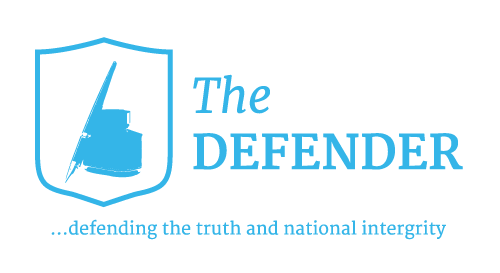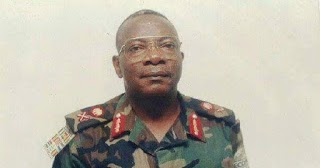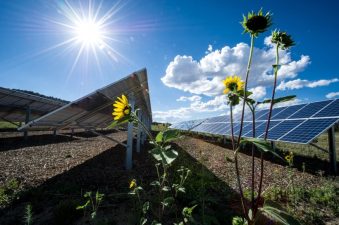The United States and NATO have said Russia is still building up troops around Ukraine despite Moscow’s insistence it was pulling back, questioning President Vladimir Putin’s stated desire to negotiate a solution to the crisis.
In Ukraine, where people raised flags and played the national anthem to show unity against fears of an invasion on Wednesday, the government said a cyberattack that hit the defence ministry was the worst of its kind the country had seen. It pointed a finger at Russia, which denied involvement.
Russia’s defence ministry said its forces – part of a huge build-up that has been accompanied by demands to the West for sweeping security guarantees – were pulling back after exercises in southern and western military districts near Ukraine.
It published video that it said showed tanks, infantry fighting vehicles, and self-propelled artillery units leaving the Crimean Peninsula, which Moscow seized from Ukraine in 2014.
But US Secretary of State Antony Blinken said key Russian units were moving towards the border, not away.
“There’s what Russia says. And then there’s what Russia does. And we haven’t seen any pullback of its forces,” Blinken said in an interview on MSNBC. “We continue to see critical units moving toward the border, not away from the border.”
A senior Western intelligence official said the risk of Russian aggression against Ukraine would remain high for the rest of February and Russia could still attack Ukraine “with essentially no, or little-to-no, warning”.
Analysts have warned that the crisis may rumble on for months to come.
“This could even last indefinitely – the game of cat and mouse is just getting started,” Peter Zalmayev, director of the Eurasia Democracy Initiative, a think-tank on post-Soviet states, told Al Jazeera.
‘No de-escalation’
Meanwhile, NATO Secretary-General Jens Stoltenberg said moving troops and tanks back and forth did not amount to proof of a pullout.
“What we see is that they have increased the number of troops and more troops are on their way. So, so far, no de-escalation,” he said before an alliance meeting in Brussels.
Stoltenberg later said NATO could prove Russia’s failure to pull back its troops with satellite imagery. He also said NATO had tasked its commanders to work out details for the deployment of battlegroups to the alliance’s southeastern flank.
The United Kingdom will double the size of its force in Estonia and send tanks and armoured fighting vehicles to the small Baltic republic bordering Russia as part of the NATO deployment, British Defence Secretary Ben Wallace said.
The Kremlin said NATO’s assessment was wrong. Moscow’s ambassador to Ireland said forces in western Russia would be back to their normal positions within three to four weeks.
Russia says it never planned to attack Ukraine but wants to lay down “red lines” to prevent its neighbour from joining NATO, which it sees as a threat to its own security.
Al Jazeera’s Dorsa Jabbari, reporting from Moscow, says the sense in the Russian capital was that the US and NATO were using the Ukraine crisis as a ploy to “get Moscow to back off from its security demands”.
“This is a feeling that is shared by various officials as well as the general public, they believe that nobody is interested in war and certainly Putin has made it very clear that he is not going to invade Ukraine,” she said.
The Kremlin said Putin was keen to negotiate with the US, which has offered discussions on arms control and confidence-building measures while ruling out a veto on future NATO membership for Ukraine.
But Russia also said it would be ready to re-route energy exports to other markets if it were hit by sanctions, which Washington and its allies have threatened if an invasion were to take place.
Finance Minister Anton Siluanov said sanctions against Russian banks would be “unpleasant” but the state would ensure all bank deposits and transactions were secured.
Moscow has accused Washington of hysterical war propaganda after repeated warnings of a possible attack and reports in some Western media that it would happen on Wednesday.
Military analysts say a significant pullback would involve field hospitals and fuel stores being dismantled and units from Russia’s far east, which are taking part in exercises in Belarus this week, returning to bases thousands of miles away.
Earlier this week, Ukrainian President Volodymyr Zelenskyy designated Wednesday a patriotic holiday in response to the reports Russia could invade on that day. “No one can love our home as we can. And only we, together, can protect our home,” he said.
Al Jazeera’s Natacha Butler, reporting from Kyiv, says Ukraine’s so-called “day of unity” was meant to send a message to Russia that “Ukrainians are strong, the country is strong, and that they would be willing to fight if there was any attack or invasion”.
In the Ukrainian capital, people were “really wondering what will happen next and are increasingly fed up with having to think each day whether there might or not be an invasion – it’s a very tense time”, she said.
SOURCE: AL JAZEERA AND NEWS AGENCIES




